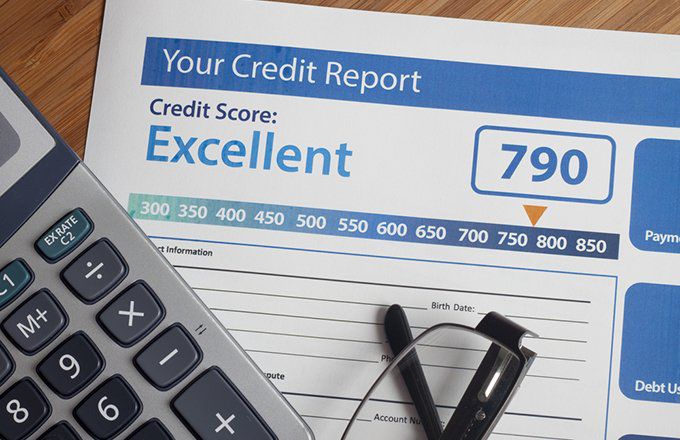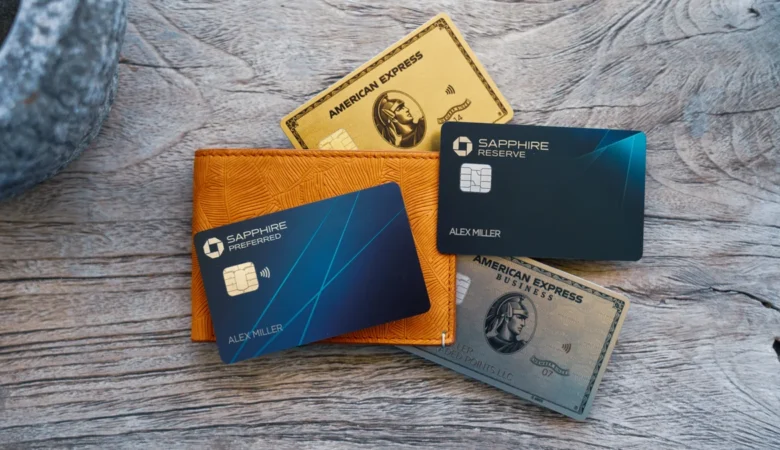Anatomy of Credit Card: With the trendy designs for almost all products we consume, credit card designs also keep changing. But with the design changes, the basics remain the same. Many cards have information like the issuer name, the network, the cardholder’s name, and the card number.
Let us explain the information represented at the front and back of a credit card.
Front and Back of a Credit Card: Everything You Need To Know
Credit Card’s Front Design:

Credit Card Issuer:
This represents the bank that has issued the credit card. You apply to a bank for issuing you a credit card and it decides card details like APR, reward points and benefits.
Credit Card Name:
Every credit card has its own name, in this case, ‘Cash Rewards’ is the name of the card. Generally, the card names start with the issuing bank’s name followed by the particular card’s name. In the above case, they have made combined the words ‘Bank of America’ and ‘Credit Card’ and created the word ‘BankAmericard’. Many times Bank of America uses the word ‘BankAmericard’ to begin their card names.
Credit Card Network:
This is the credit card network and also represents the level of service associated with this card. The status of the card is represented here, for e.g. if the card was of Visa Signature credit card status, it would have been mentioned here. The credit card network holds the responsibility of processing payments which are made with the card. There are four credit card networks – Visa, Mastercard, American Express and Discover.
Mastercard and Visa are the world’s biggest credit card networks and they are majorly accepted for payments almost everywhere. Both of them do have some differences but they aren’t so significant. Hence, you do not have to worry about choosing the network.
Cardholder Name:

This is the name of the owner of the card.
Credit Card Number:
With every credit card, this identifying number is associated. It is stored in the magnetic stripe. When you use the card at a store, you swipe the card in card reading terminal/machine, at that time your credit card number provides information about the credit card network and the issuer.
The American National Standards Institute or the ISO or the International Organization for Standardization assigns credit card numbers. Allocated by your card issuer, your card number can consist of up to 16 digits. Some cards have only seven digits.
Your credit card number holds a lot of information. In order to use your card, this information is not quite important. Here is how the numbers are categorized by the ISO or the International Organization for Standardization:
Issuer Identifier Numbers:

Digit 1-6: Issuer Identifier Numbers
First digit: This represents the credit card network. It is called the Major Industry Identifier. Each of these six digits represents a different industry.
-
- 0 – ISO/TC 68 and other industry assignments
- 1 – Airlines
- 2 – Airlines, financial and other future industry assignments
- 3 – Travel and entertainment
- 4 – Banking and financial
- 5 – Banking and financial
- 6 – Merchandising and banking/financial
- 7 – Petroleum and other future industry assignments
- 8 – Healthcare, telecommunications and other future industry assignments
- 9 – For assignment by national standards bodies
For every card network, the first digit is different:
-
- Visa cards – Begin with a 4 and have 13 or 16 digits
- Mastercard cards – Begin with a 5 and have 16 digits
- American Express cards – Begin with a 3, followed by a 4 or a 7 and have 15 digits
- Discover cards – Begin with a 6 and have 16 digits
- Diners Club and Carte Blanche cards – Begin with a 3, followed by a 0, 6, or 8 and have 14 digits
Digit 2-6: These digits provide an identifier for a particular institution.
Digit 7-15: Unique Personal Identifier Numbers
- These identify the cardholder’s name
- These are unique to the issuer
Digit 16: Check digit
- Verifies card numbers for accuracy to ensure that they weren’t inputted incorrectly
For each card network, the rest of the digits are also different.
For Visa cards:
- Digit 2-6: Make up the bank number
- Digits 7-12 or 7-15: Represent the account number
- Digit 13 or 16: Is a check digit
For Mastercard cards:
- Digits 2 & 3, 2-4, 2-5, or 2-6: Make up the bank number; depends on whether digit two is a 1, 2, 3 or other digits
- Digits after the bank number, up to digit 15: Represent the account number
- Digit 16: Is a check digit
For American Express cards:
- Digit 3 & 4: Are type and currency
- Digits 5-11: Represent the account number
- Digit 12-14: Represent the card number within the account
- Digit 15: Is a check digit
Read More: Credit Card Security: 9 Do’s And Don’ts For Avoiding Identity Theft
Chip EMV Technology:

This chip is used as another way to hold the cardholder’s information, in addition to the magnetic stripe (at the back of the card). This is a much secure and modern form to store information and provides better security against fraud credit cards.
Known as EMV technology which stands for ‘Europay, Mastercard, Visa’, this is the global standard for chip technology. It comes in two forms:
Chip and signature: A chip and signature card needs your signature to complete a transaction.
Chip and PIN: A chip and PIN card use a PIN, created by you, to complete a transaction, like a debit card.
Credit cards can be either one or both of these types. In the US, it is quite common to find only chip and signature cards these days but in the future, more cards with both techniques will be available.
By law, in the US, it is required that credit cards should be chip-enabled by the beginning of October 2015. If merchants do not comply with these standards of giving new technology for the chip cards, they will be held liable for fraudulent credit card activity.
Account Opening Date:
It shows the years when this credit card account was opened. This information is not shown on all cards.
Expiration Date:

This shows the date when your card will expire. It does not mean that your credit account will get closed, it means that you should get a new card issued. Your credit card issuer will automatically mail you the new card with a new expiration date, CVV code, and sometimes a new account number.
Credit cards have an expiration date:
- To allow card issuers a predetermined end to the card’s services. If they wish to do so, they can do it on this date.
- As the card will get old with time and have few scratches here and there, this can damage the magnetic stripe and make it eventually unreadable.
- Because it acts as a fraud protection measure and it is an additional way of protecting the card.
- To remind the cardholders that they own this card and the credit card issuers can send them a new one.
Credit Card’s Back Design:

Magnetic Stripe:
This black bar which holds all of your account information is also known as the magstripe and is made of millions of tiny magnetic particles. When you swipe your card, the reading machine receives your account’s details from this stripe and uses it to process the transaction.
If the stripe is too scratched or dirty to be read or a magnet has erased the information on the magstripe, an ATM or card reader would not be able to accept your card. If your card’s magstripe is not working, you can call your card issuer and request a new card. Generally, the card issuers do not charge for replacing the card for this reason.
CVV Security Code:

The CVV code is a fraud-prevention mechanism. It is used in online transactions or when the card is not present, these transactions do not need you to have the physical card. You just need this code printed at the back of the card.
CVV codes are a 3-digit number for Visa, Mastercard, and Discover cards, and a 4-digit number for American Express cards.
Customer Service Phone Line:
This phone number is the best number to use for customer service. You might have other services related to this card with their different phone numbers, you can get help by calling them for your specific requirements.
Signature Box:

This is another fraud-prevention tool but it is not much useful.
The intention is to match this signature with a driver’s license or a signature given at the register when to purchase. Merchants rarely check if this box has a signature let alone double-check the signature with other ID documents.
Hologram Security Feature:
To protect the card from being copied, this hologram is used as a security measure. It consists of many layers of several images at different angles and thus gives an illusion of motion. Sometimes there are even hidden images in these layers. These hidden images and multiple layers make it very difficult for the hologram to be copied.
People also search for like: How does the credit card algorithm work?, What is the working mechanism of credit cards?, What is the anatomy of a credit card?, How does the method of credit cards work?, What algorithm do credit cards use?, What is the CVV algorithm?, How are credit cards activated?
Read Also:
1. How To Build Credit With Credit Cards
2. Best Credit Cards For International Travel
3. Should You Buy An International SIM Card For Your Next Trip?






Amazing article on Anatomy of a Credit Card. After reading this blog, I can know about Credit Card Algorithms and it’s very helpful to all your readers. Keep sharing your knowledge!
I have read many articles on credit card anatomy. But this blog has very informative content. Honestly speaking, I learned something new things from this blog. Thanks and keep writing!
This article is very useful for Credit card users. After read this whole article, I got some new information about credit card. Keep sharing your ideas!
Hi my family member! I want to say that this post is awesome, nice written and come with almost all significant info’s.